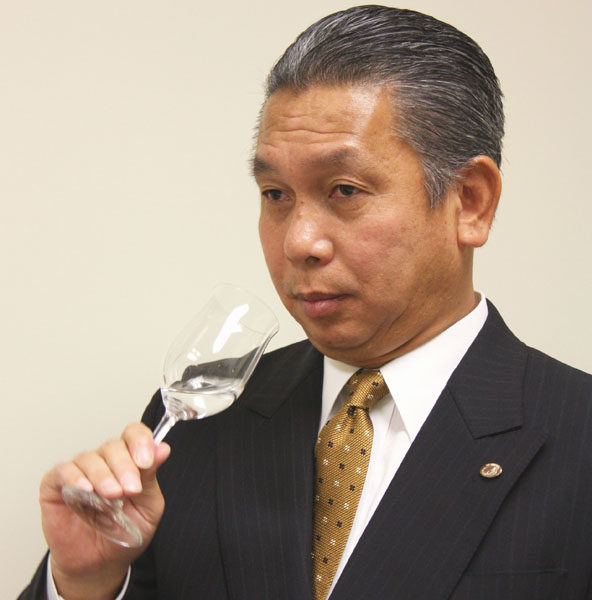Sommelier Talk: Episode 15 – Reviewing Sake Like a Pro Pt. I
I’m sure that many Japanese restaurant owners, chefs, and mangers have participated in Sake tastings to consider them for sake menu listing. I’d like to offer some key points when conducting such samplings, so as to help improve tasting skills like a pro, and in turn, to strengthen the Sake menu.
There are three main objectives for conducting sake tastings, and let me take you through each one individually.
- To Analyze and Evaluate the Characteristic of Each Sake: First off, one must learn to hold an open, unbiased view on the characteristics of any sake brew, regardless of personal preferences. Each product deserves to be evaluated in a professional manner if it’s to be marketed successfully. Using our basic human senses, a full analysis would include the following three steps: (1) Vision & Clarity: Examine the degree of transparency, color, and viscosity. (2) Smell: Understand the type of aroma, its strengths and weaknesses, sustainability and complexity. (3) Taste: Savor the flavor, its strengths and shortfalls, sweetness, acidity, bitterness, alcohol volume, smoothness, rigidity, balance and impact.
To fully develop this professional screening process may take repetitions upon repetitions of practice. By sensitizing our three senses and deciphering the characteristics objectively through close examination, the process will eventually become easier. For assistance, refer to the product information flyers provided by sake breweries. And note, that hearing opinions from colleagues is a very helpful exercise in acquiring more objective and insightful views.
- To Express Flavor Profiles: Fully conveying product features on a printed menu is a difficult task. Due to space limitations, it’s crucial to express the message in as simple and concise language as possible. Let’s refrain from offering judgment based on our personal experience, and from using native expressions that are limited to our hometowns. Also, be careful not to use expressions that contradict. Keeping communication simple is key as not to confuse the guest to a point that he’d give up and order a beer instead.
- To Create Dishes that Complement the Sake: Completing the first two steps will help in creating compatible food pairings that can offer the guest a dining AND drinking experience that’s exponentially memorable. Recommending drink and food combinations would be relieving the sometimes uncomfortable factor which guests face when ordering a new dish or a drink. Why not offer an instant comfort zone that the guests seek, one that’s certain to be a delightful surprise.
On next episode, I’ll delve a bit further into these same concepts, on how to strengthen Sake sales.


